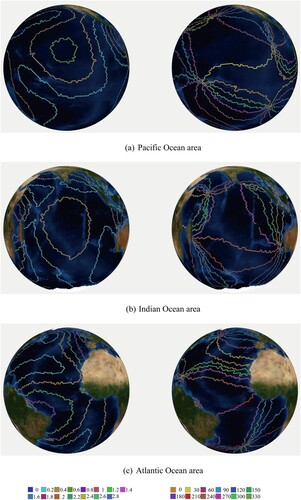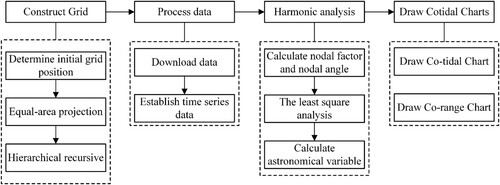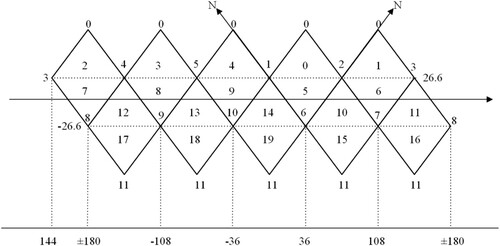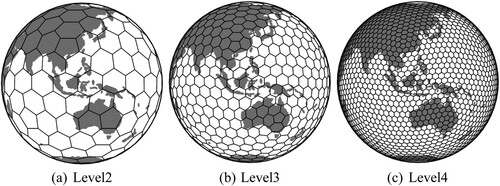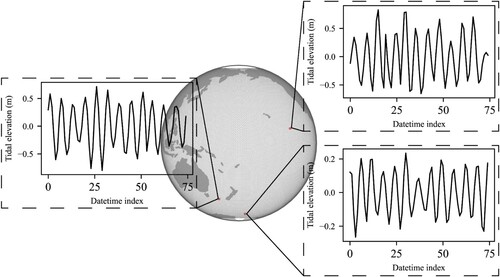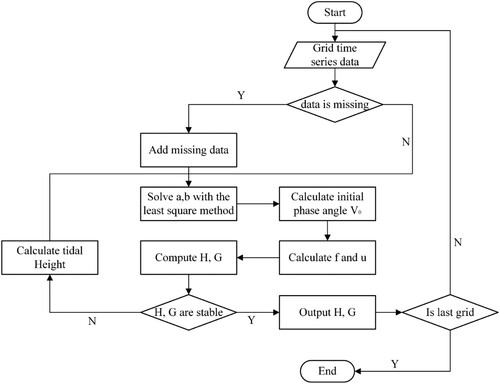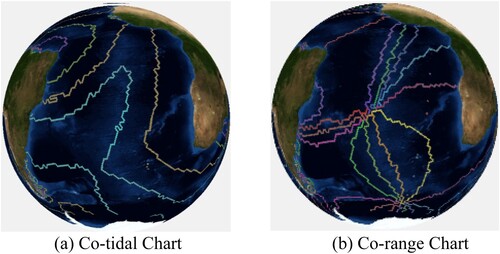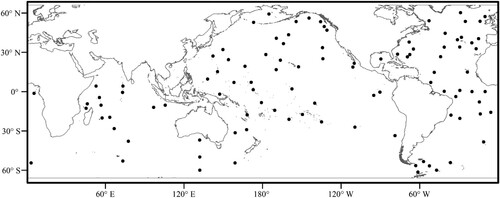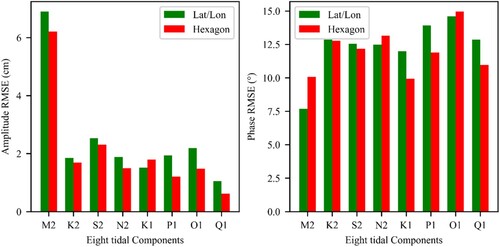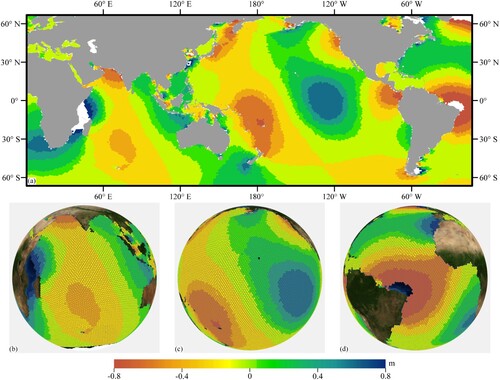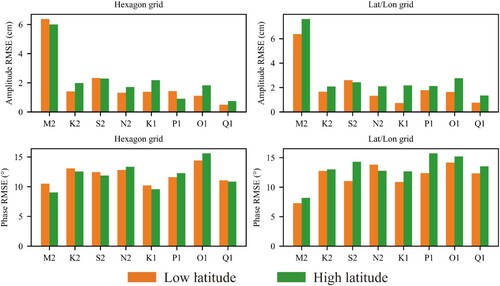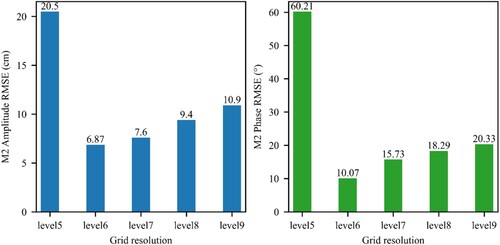Figures & data
Table 1. Resolution of the global equal-area hexagonal grid.
Table 2. Satellite data storage structure after processing.
Figure 5. Schematic diagram of tidal elevation sequence of compound tide and major constituent tides derived from harmonic constants.
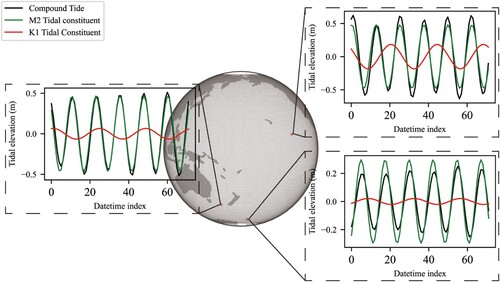
Figure 7. Schematic diagram of diffusing query adjacent neighbour: (a) first layer diffusion; (b) second layer diffusion; (c) third layer diffusion.

Figure 8. Steps for searching equivalent grids: (a) grid classification; (b) category boundary; (c) query higher level grid boundary; (d) the equivalent grids under higher level grid.
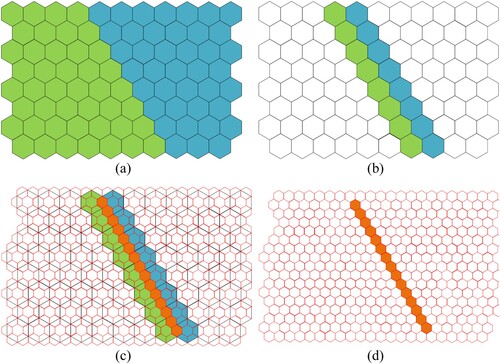
Table 3. Introduction of altimeter data.
Figure 12. Comparison of the TPXO9.5 ocean model and simulated results for the tidal constituent M2.

Table 4. RMSE values of eight components at gauge stations.
Figure 14. Co-tidal Charts and Co-range Charts of M2 components in three oceans. Left are Co-tidal charts and right are Co-range charts.
